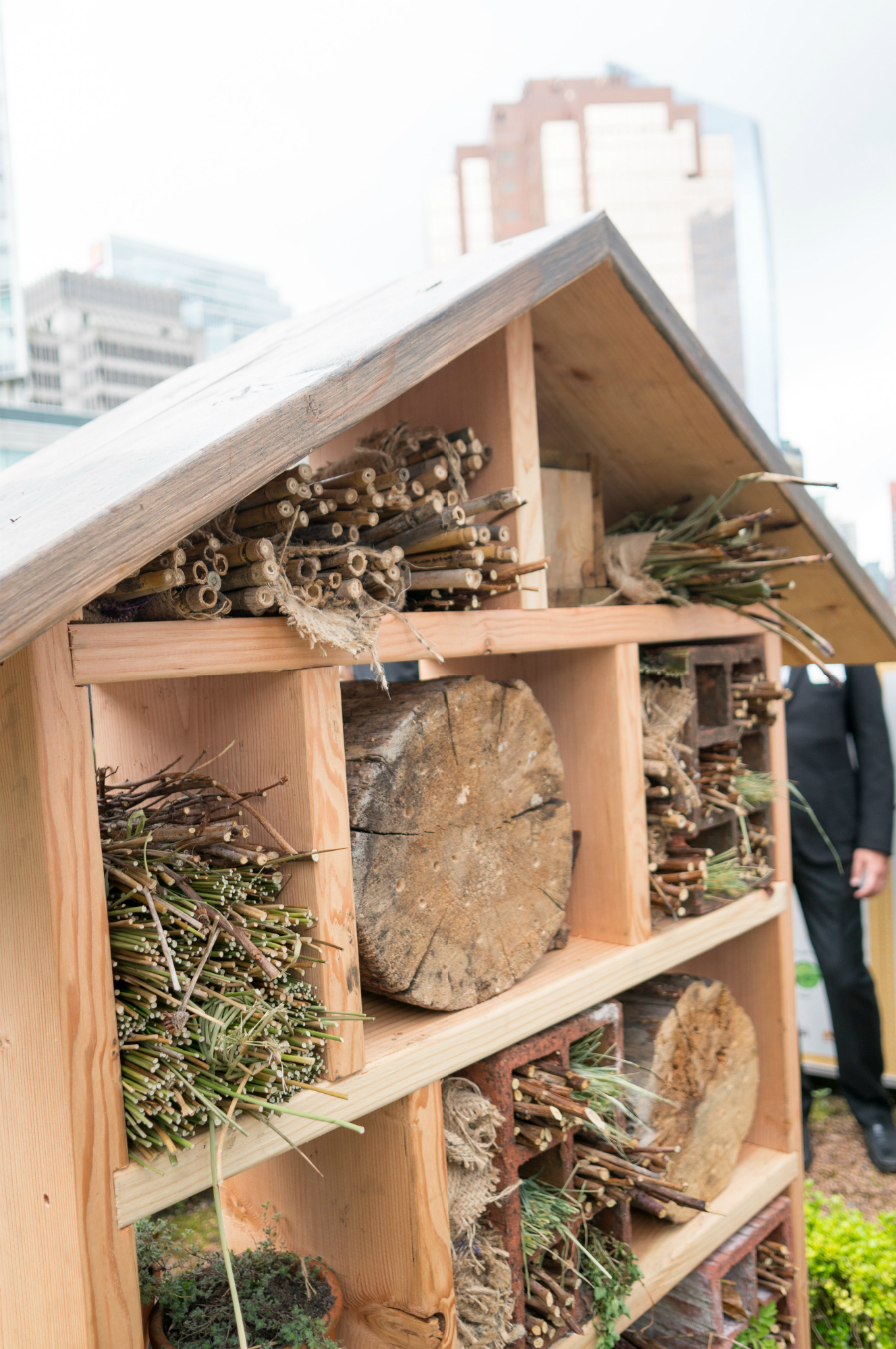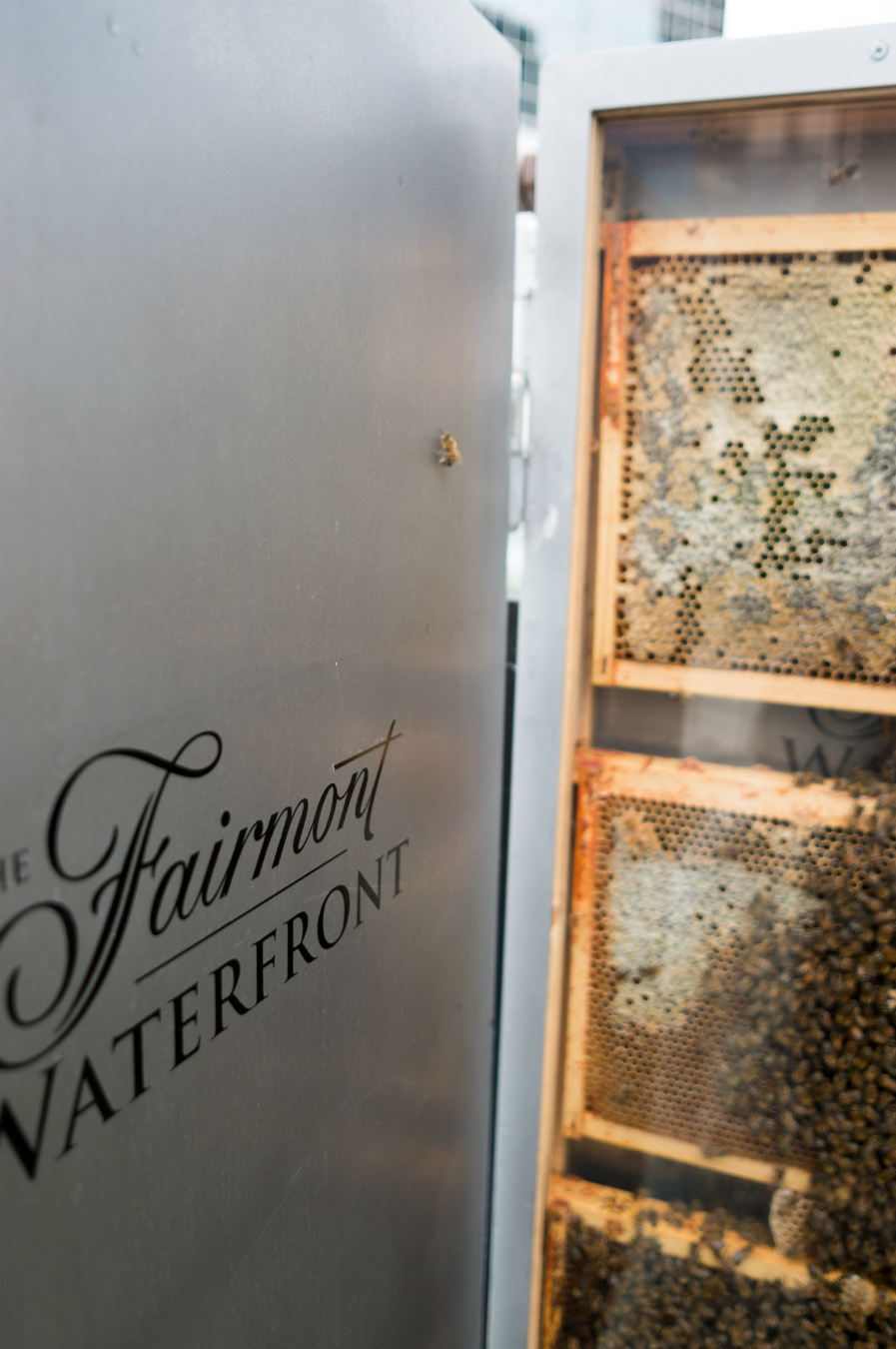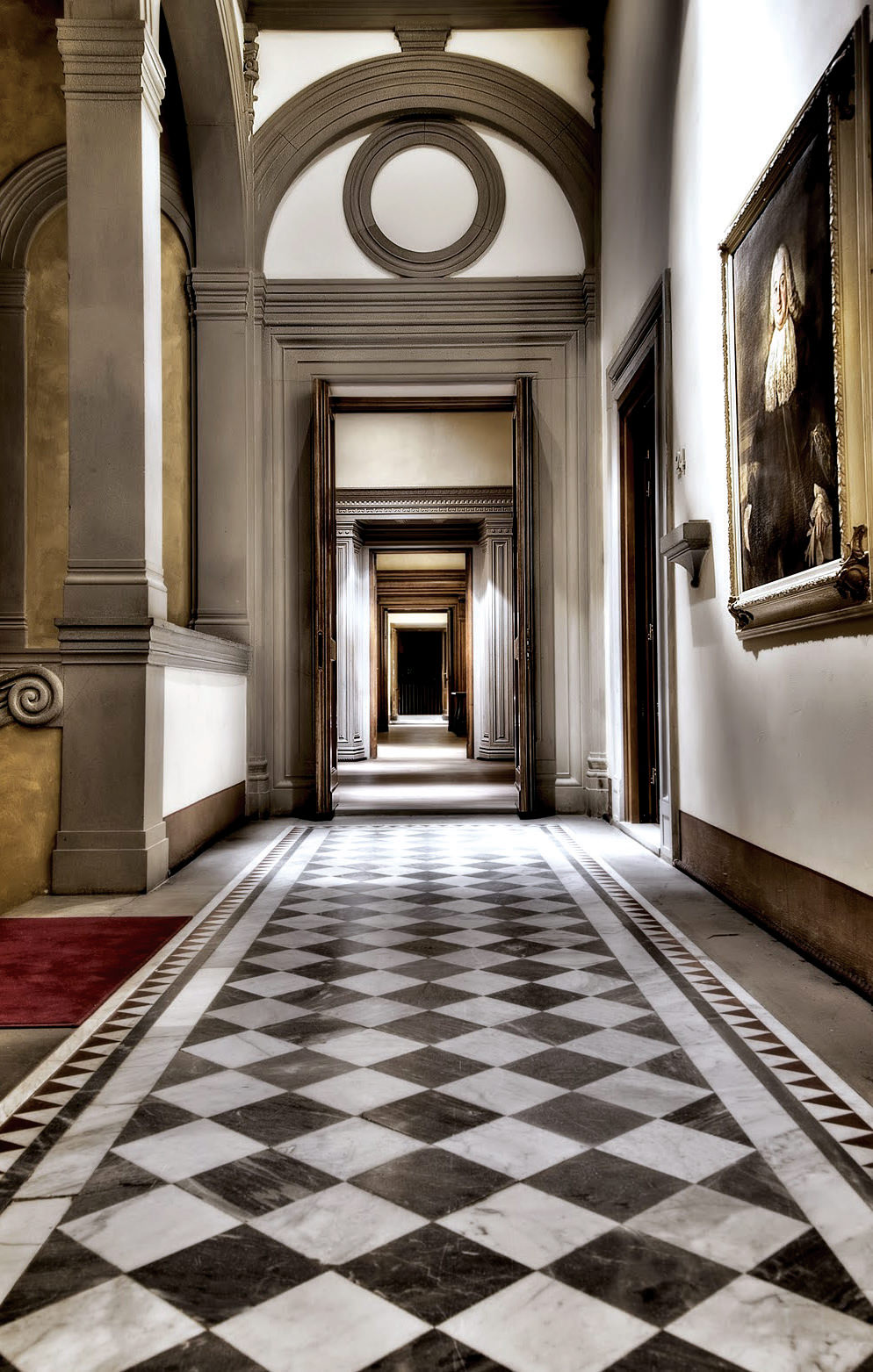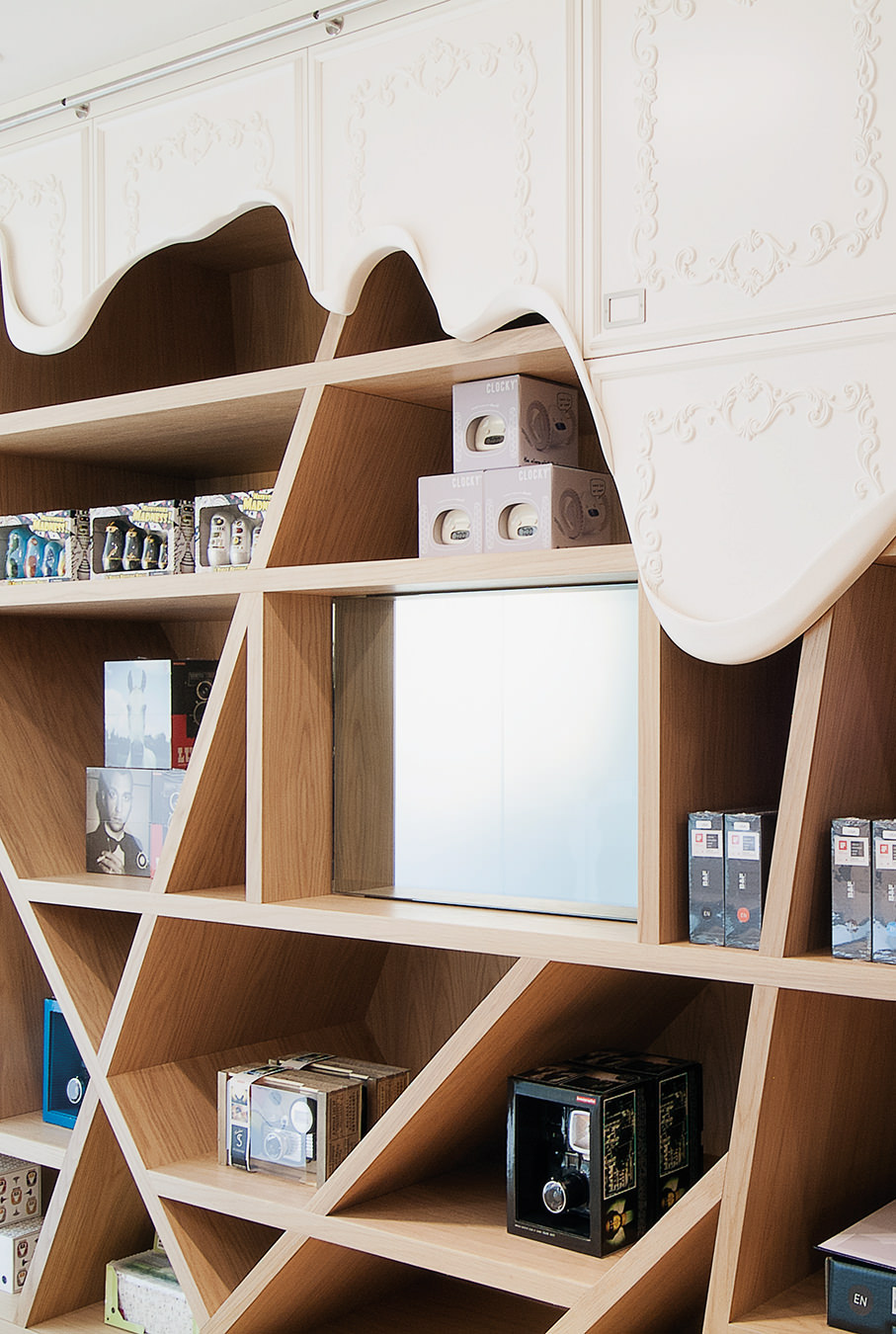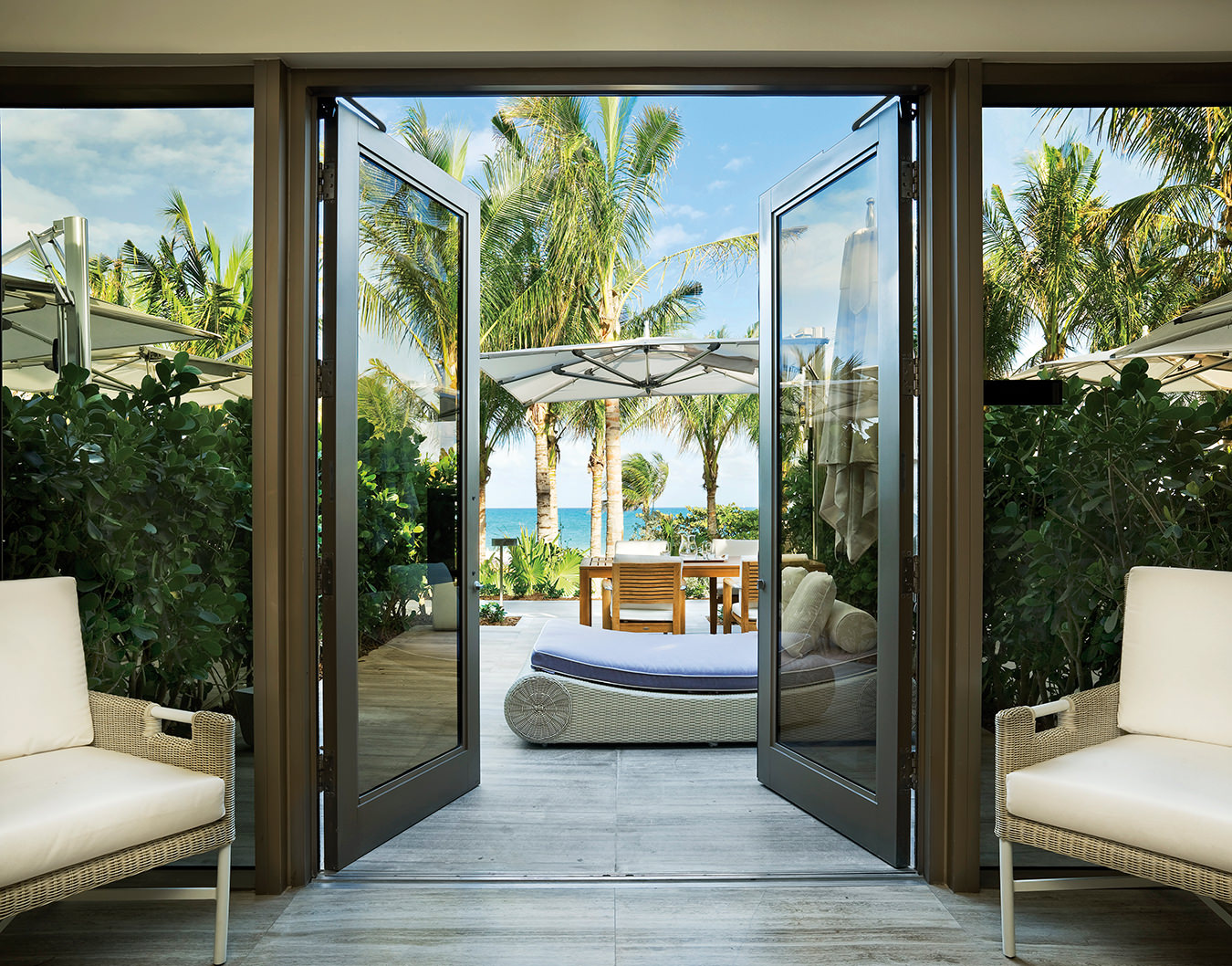Bee Hotels
All abuzz at the Fairmont.
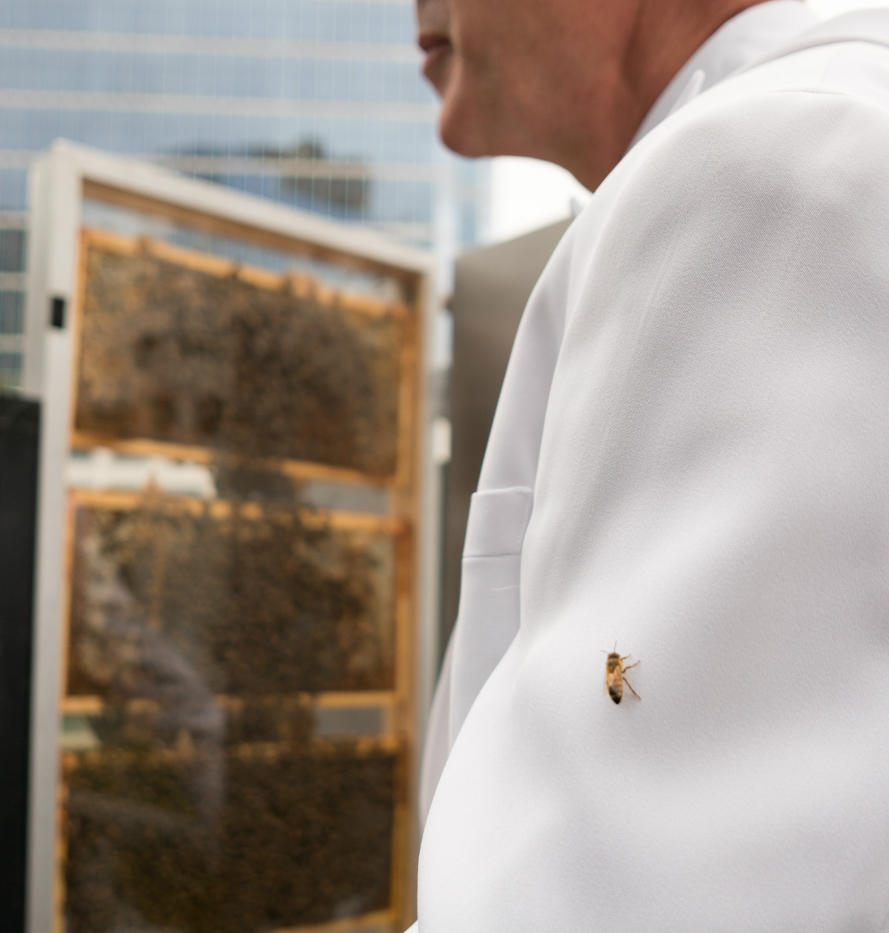
“One way to think about a bee is as a flying $50 bill,” says Michael King, the bee butler at Vancouver’s Fairmont Waterfront hotel. Dressed in a white tuxedo, King is the veritable banker who tends to all the flying $50 bills at the Fairmont’s rooftop bee hotel. And, he may be in charge of much more currency: some claim that if honeybees were paid minimum wage, a jar of honey would cost in the ballpark of $100,000 or much higher.
It’s more difficult to determine the value of a pollinator who doesn’t produce honey—that’s where the Fairmont’s partnership with Burt’s Bees comes in. By creating a chain of seven nationwide bee hotels under the Wild for Bees moniker, the partnership initiative helps out solitary bees, often forgotten in the buzz of hive-oriented honeybees.
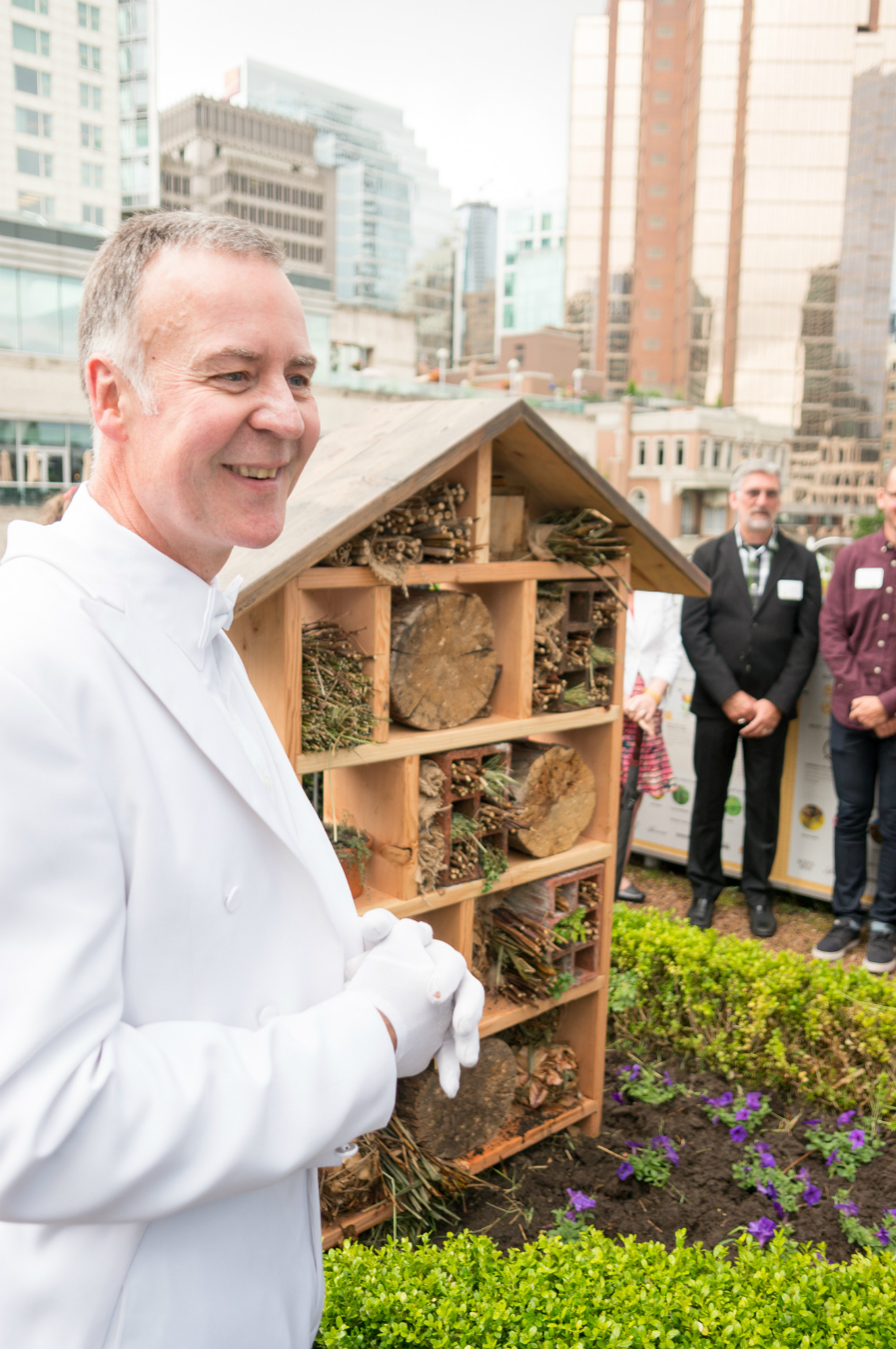
These new Fairmont “accommodations” come as an addition to the existing honeybee hives that produce approximately 275 kilograms of honey each year for the Fairmont Waterfront, and to help diversify their pollinator portfolio. But the goal of these new hotels is not to provide monetary value. Instead, the initiative is looking to accomplish two things: to create an undisturbed habitat to support solitary bees, and to raise awareness of these others pollinators because they don’t have any buzz words surrounding them like honey, cash crops, CCD (colony collapse disorder), or other ways of monetizing their invaluable contribution.
Earlier this summer, the Fairmont Waterfront unveiled their solitary bee hotel, located in their 2,400-square-foot rooftop garden. It joins the 20-plus solitary bee hotels on Fairmont properties across Canada, offering room-and-board to local pollinators. This one, atop the Vancouver Fairmont Waterfront, is a south-facing pine frame made by the not-for-profit organization Hives for Humanity, and what this unassuming structure lack in prestigious appearance it makes up for with thoughtful additions for its flying patrons.
The hotel looks like a cross-section of a dollhouse, stocked with items that are chosen for both their diverse bee-attracting qualities as well as being a reflection of local materials the heritage of Vancouver. “Bees like natural products, so we had to make sure everything we put in here were products you’d find in their normal habitat,” explains King. Sections include pieces of windblown Stanley Park trees, drilled with various-sized holes to accommodate mason bees; bamboo shoots and raspberry branches for pollinators to nestle between; and nests woven from bramble and sheep wool.
Solitary bee varieties include docile mason bees, mild mannered leafcutter bees, carpenter bees, and the 500 other species of bees that are native to B.C., and they count for 90 per cent of the world’s bee population. They serve a vitally important role as, unlike honeybees, they are able to fly in the lower temperatures at the beginning of the pollinating season and act as first responders to kick-start the spring blooms and agriculture. The Wild for Bees program hopes to elevate the importance of these solitary insects to their proper place alongside honeybees as an important part of a healthier pollinator population, and in turn, a more sustainable world.

